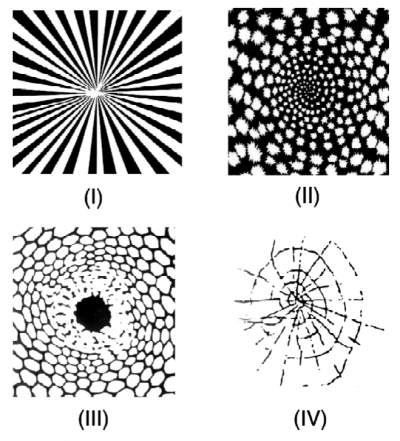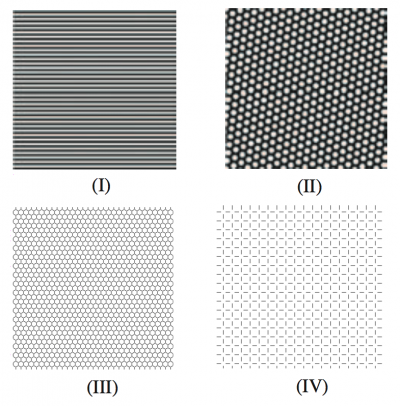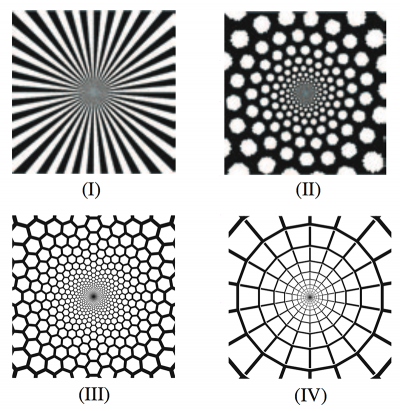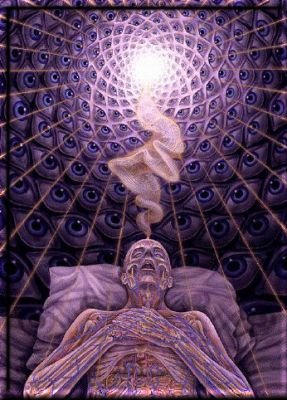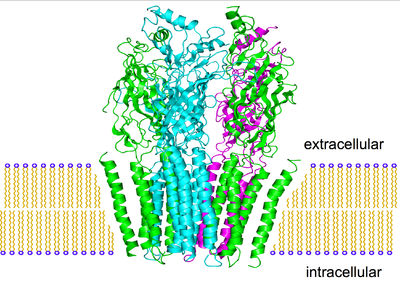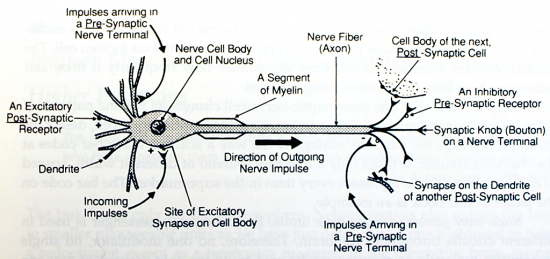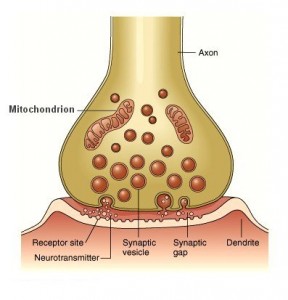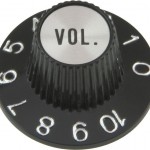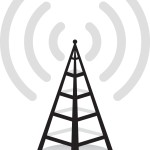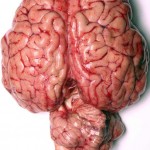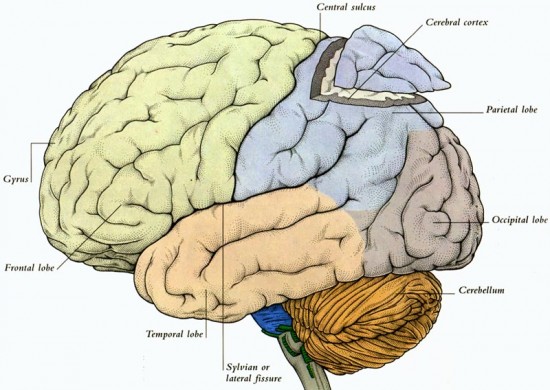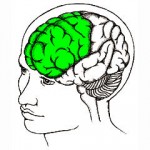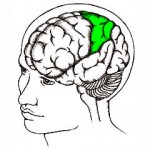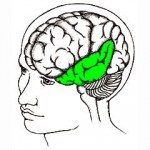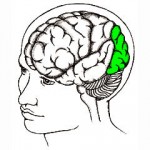Form Constants and the Visual Cortex
 There are common visual concepts which cut across boundaries of culture and time and reflect what it truly means to be human. Near death experiences are often associated with seeing a “light at the end of a tunnel”. In the Bible, God appeared to Ezekiel as a “wheel within a wheel”. Spirals and concentric circles are commonly found in petrogylphs carved by cultures long dead. Similar visual effects are reported during extreme psychological stress, fever delirium, psychotic episodes, sensory deprivation, and are reliably induced by psychedelic drugs.
There are common visual concepts which cut across boundaries of culture and time and reflect what it truly means to be human. Near death experiences are often associated with seeing a “light at the end of a tunnel”. In the Bible, God appeared to Ezekiel as a “wheel within a wheel”. Spirals and concentric circles are commonly found in petrogylphs carved by cultures long dead. Similar visual effects are reported during extreme psychological stress, fever delirium, psychotic episodes, sensory deprivation, and are reliably induced by psychedelic drugs.
In 1926, Heinrich Klüver undertook a groundbreaking series of experiments where he categorized the visual effects produced by mescaline. Various volunteers were recruited, peyote administered, reports taken, and results classified into categories. There were general perceptual effects, variations in color and distortions of shape. But the most interesting reports were consistent visual concepts he dubbed “form constants”. Across many volunteers and many sessions, all reported seeing visual patterns with similar structure.
They were classified into four main types: I) tunnels, II) spirals, III) lattices, and IV) cobwebs. For almost fifty years, these form constants were regarded as a strange mystery of visual perception, a seemingly unexplainable common human experience.
In 1979 Jack Cowan and G. Bard Ermentrout put forward a very interesting explanation, supported by a rigorous mathematical treatment. These visual effects are the result of specific noise patterns in the visual cortex, which are then transformed by the wiring between the brain and the eye to produce these unique shapes. They generated simple biologically allowable noise patterns, transformed them, and produced graphs of these form constants.
Let’s dive a bit deeper into how this was done, by first having a look at the structure of the visual cortex. We’ll look specifically at V1, the first layer of visual processing where information from the retina is fed to. We can think of it as a sheet of hypercolumns, cells sensitive to lines oriented in any direction. This surface is crinkled up like a ball of paper in your brain, but we can unfold it in a theoretical sense. These hypercolumns are linked together in a specific manner, which allows noise patterns of only certain types to form. Just like a tarp in the wind will only flap in certain predictable ways assuming it does not tear, so too will noise only travel across the visual cortex in specific ways. Four types of noise were found.
These stable planforms can be thought of as excited noisy states in contrast to the normal low-activity state of the visual cortex. We can refer to them as I) the non-contoured roll, II) the non-contoured hexagon, III) the even contoured hexagon, and IV) the even contoured square.
So now that we have our noise patterns, how are they mapped from the visual cortex to what we actually see? Biology provides a clue here. Experiments have been done which allow mapping of how the visual cortex represents input from the retina. By stimulating a certain point or region of the retina, the corresponding cells which light up in V1 can be measured. The easiest mapping you might think of would be for the input of the retina to be represented as a flat sheet, which is then passed to the visual cortex like a photocopy. Instead, it turns out that the circular retina’s image is twisted and mapped in a slightly more complex manner to the flat surface of V1.
| Visual Cortex (V1) | Retina |
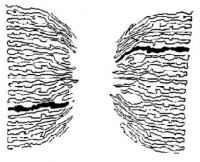 |
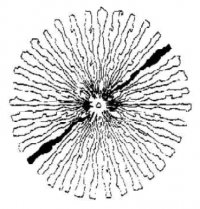 |
 |
 |
We can see that straight lines in our visual cortex are mapped to curved lines in the retina, and vice versa. We can represent this relationship mathematically using the complex logarithm, so let’s apply this complex log transform to our four types of visual cortex noise.
And beautifully, Klüver’s four form constants are produced, visual cortex noise twisted by the wiring between mind and eye. This hypothesis fits the fact that these high energy states may be caused by a variety of stimuli affecting excitability of the brain but most reliably by psychedelic drugs which bind to serotonin receptors richly expressed in the visual cortex.
It is compelling to think that these powerful symbols rely on no religion, no culture, and no time. They are a product of the fact that we are all human and share the same biology. A true tragedy that these visions have been used as an excuse to kill others when we all see the same wheels within wheels.
Ermentrout, G.B. and Cowan, J.D., “A mathematical theory of visual hallucination patterns.” Biol. Cybernet. 34 (1979), no. 3, 137-150.
Bressloff, Paul C.; Cowan, Jack D.; Golubitsky, Martin; Thomas, Peter J.; Weiner, Matthew C. (March 2002). “What Geometric Visual Hallucinations Tell Us About the Visual Cortex“. Neural Computation (The MIT Press) 14 (3): 473–491.
